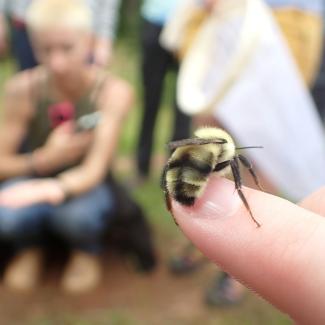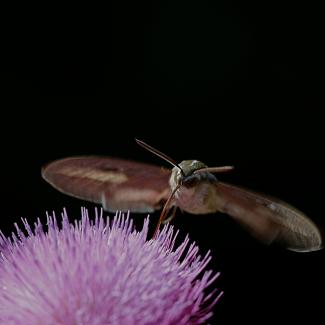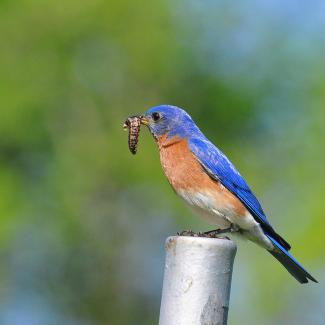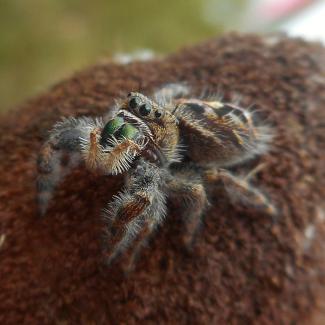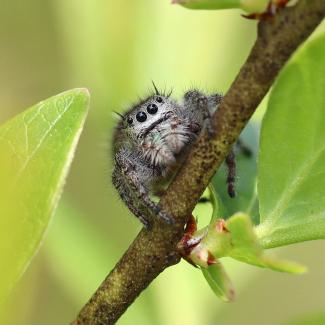Insects in the Balance: Why Monitoring Matters
43 MinutesGuests: Matt Forister
Bees, butterflies, beetles — populations of almost any group of insects you can name seem to be falling. But how do we know they are falling, how can we find out how well insects are doing? Monitoring is an essential tool for understanding the abundance and distribution of species, as well as how they respond to conservation efforts.
The Power of Policy: Insect Protection Through State Authority
36 MinutesGuests: Rosemary Malfi, Kevin Burls
In one of our first episodes we spoke with Sarina Jepsen, the director of our endangered species team, about what it means for a species to be federally listed, specifically through the Endangered Species Act. However, species can also be listed through individual states, but not all states are the same, and some states don’t have legislation to protect insects. It is an interesting story!
The Secret Lives of San Diego Zoo Insects
43 MinutesGuests: Paige Howorth
Many of us likely have childhood memories of a zoo visit: gibbons swinging above us, lions pacing, a polar bear taking a plunge. Zoos also can play an important role in conservation, particularly for insects. One example is the work done at the San Diego Zoo to help invertebrates by solving mysteries about their habitat and life cycle needs, and in some cases bringing back species on the brink of extinction.
Buzzing Together: The Bumble Bee Atlas and the Power of Community Science
32 MinutesGuests: Amy Dolan, Michelle Toshack
Community science is critical to conservation efforts and the Bumble Bee Atlas is no exception. Volunteers across the country have contributed to the Atlas program through bumble bee surveys, providing crucial information on bumble bee abundance and distribution. This information informs conservation efforts and makes a real difference.
Dragonflies and Damselflies: A Life's Journey from Water to the Sky
46 MinutesGuests: Dr. Jessica Ware
When we see a dragonfly, we normally see adults, which are capable of impressive aerobatics and have astonishing eyesight. Yet these fearsome aerial predators begin life underwater, and when they undergo the transformation from nymph to adult, they also change from water to air. Dragonflies truly are amazing!
Revival of the Fender's Blue Butterfly: A Conservation Story
46 MinutesGuests: Cheryl Schultz, Mikki Collins
We all love a success story and what better tale to tell than the one about the Fender’s blue? Once thought extinct, this butterfly was rediscovered 35 years ago, since when it has made a comeback thanks to hard work by dedicated scientists, land owners, agency staff, and many others.
Mysteries of the Moth: More Than Meets the Eye
44 MinutesGuests: Dr. David Wagner
Moths are largely creatures of the night, which means they may not get as much publicity as their day-flying relatives, butterflies. Moths are more diverse than butterflies, probably more abundant, and most certainly play a key role in the natural world. Honestly, moths are some of the coolest insects and we are excited to highlight them in today’s episode.
Bugs and Birds: Celebrating World Migratory Bird Day
35 MinutesGuests: Chris Elphick
October 12 is World Migratory Bird Day, a global campaign that aims to raise awareness of migratory birds and the need for international cooperation to conserve them. This year's theme for the campaign is “Protect Insects, Protect Birds,” underscoring the importance of invertebrates to migratory birds. Xerces is also, for the first time, an official partner in World Migratory Bird Day, so we are focusing this episode on the intersection between birds and bugs.
Spider Sense Part 2: Unraveling the Secrets of Arachnids
44 MinutesGuests: Sebastian Echeverri
In part two of this spider special, we dive into Sebastian's research during his PhD. Did you know that jumping spiders can dance? How well can jumping spiders see? Why do so many people fear spiders? And why and how should we help them?
Spider Sense Part 1: Unraveling the Secrets of Arachnids
33 MinutesGuests: Sebastian Echeverri
Spiders. There is a lot that people don't know about these interesting creatures. What makes them unique and what role do they play in our environment?




